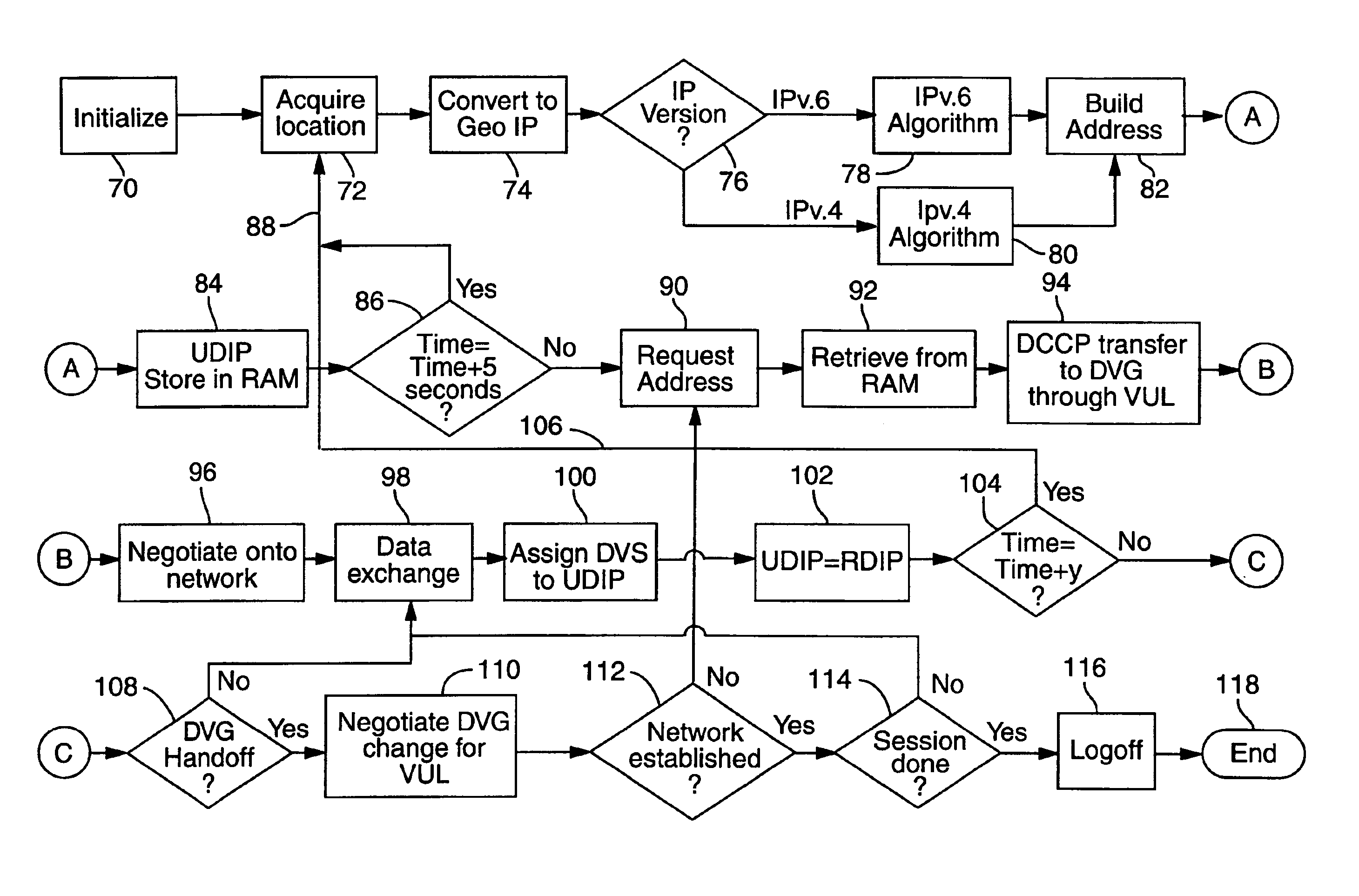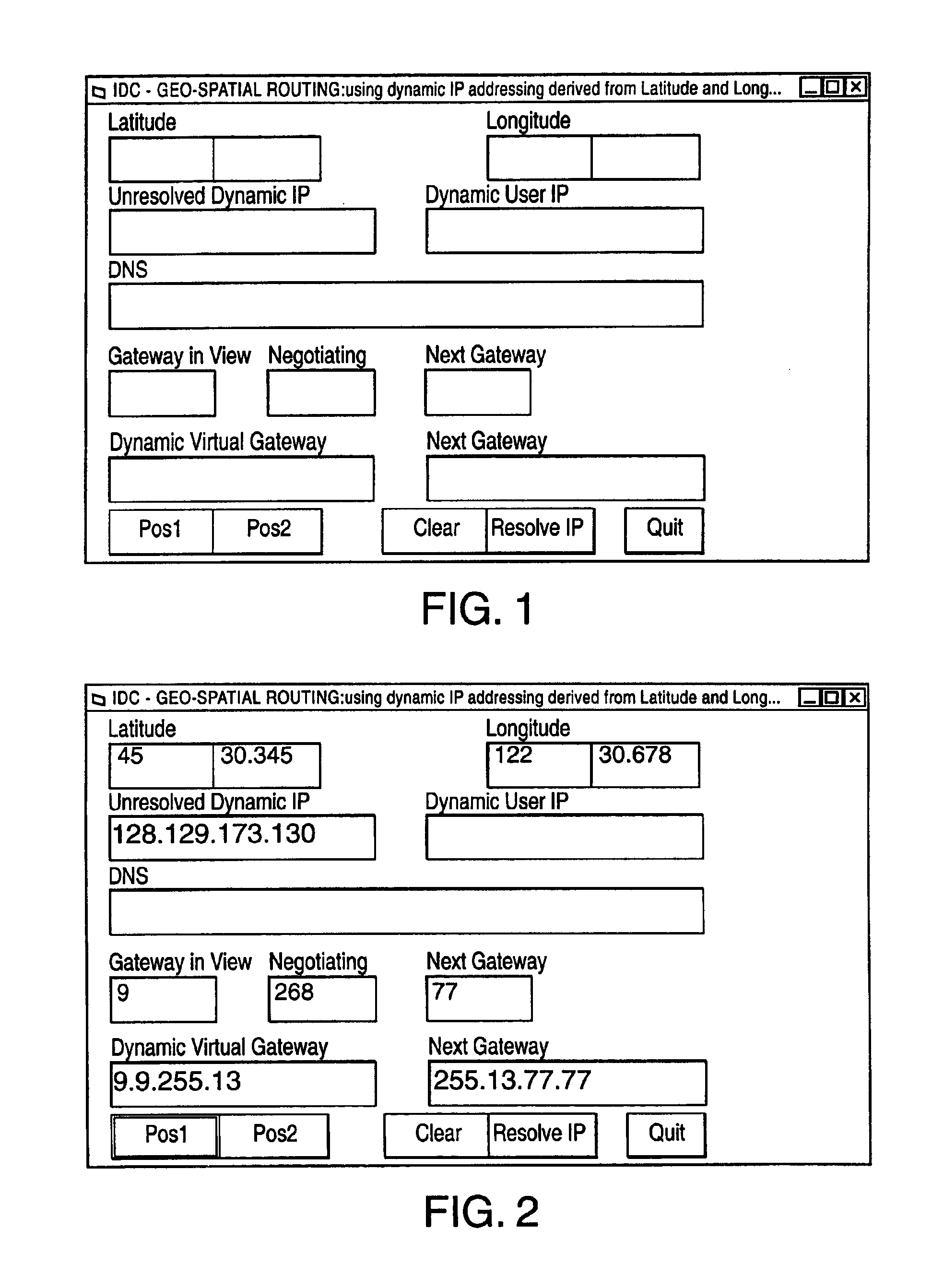Geo-spacial internet protocol addressing
a technology of geo-spacial internet and protocol addressing, applied in the field of data communication, can solve the problems of driving communication latency and overhead far below the present level
- Summary
- Abstract
- Description
- Claims
- Application Information
AI Technical Summary
Benefits of technology
Problems solved by technology
Method used
Image
Examples
Embodiment Construction
[0048]Transfer Control Protocol / Internet Protocol (TCP / IP) has been classically defined or is at least thought of as connection and connectionless data transfer protocol for computer networks only. One aspect of this invention is expanding the definition of the interface addressable devices assigned an address (IP address) to include hardware, software and firmware platforms, that do data transfer for uses other not limited to computing. Uses other than computing include but are not limited to voice and video data. Voice data is analog signals converted to digital streams through analog to digital converters, CODECs. VOCODERs, etc.
[0049]In a satellite based communications system, a unique set of problems arise with respect to the communications architecture. The “tower” that hosts the user, or caller, is no longer stationary, it moves at 16,000 MPH; and for all intents and purposes the user and his network device is stationary. This reversal of classical roles, with respect to the c...
PUM
 Login to View More
Login to View More Abstract
Description
Claims
Application Information
 Login to View More
Login to View More - R&D
- Intellectual Property
- Life Sciences
- Materials
- Tech Scout
- Unparalleled Data Quality
- Higher Quality Content
- 60% Fewer Hallucinations
Browse by: Latest US Patents, China's latest patents, Technical Efficacy Thesaurus, Application Domain, Technology Topic, Popular Technical Reports.
© 2025 PatSnap. All rights reserved.Legal|Privacy policy|Modern Slavery Act Transparency Statement|Sitemap|About US| Contact US: help@patsnap.com



